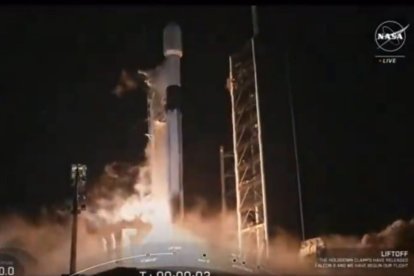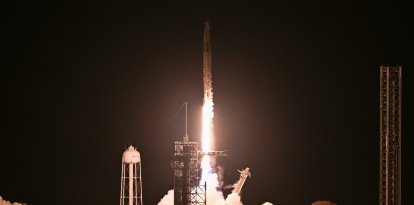The Odysseus spacecraft successfully takes off towards the Moon
Intuitive Machines aims to be the first private company to land on the moon. The IM-1 mission travels aboard a Falcon 9 rocket from the SpaceX company.

(NASA)
The American spacecraft Odysseus took off Thursday from the Kennedy Space Center in Florida with the mission of reaching the moon, in the second attempt made by a private company this year. The first of these launches, in January, resulted in a failure.
Intuitive Machines, based in Texas, is the company behind the IM-1 mission. It hopes to become the first private entity to perform a soft landing on the Earth's natural satellite and land the first American robot on its surface since the Apollo missions more than five decades ago.
The spacecraft carries NASA instruments and the main objective of the mission is to bring scientific instruments to study to the south pole of the moon, a region that remains unexplored.
Odysseus travels aboard a SpaceX Falcon 9 rocket that took off early this Thursday from Launch Complex 39A at NASA's Kennedy Space Center in central Florida. The takeoff had been postponed early Wednesday due to anomalies during the methane loading process.
With the problem fixed, the lunar lander has a new type of supercooled liquid methane and oxygen engine that delivers the power to reach its destination quickly, avoiding a long exposure to the high-radiation region surrounding the Earth, known as the Van Allen belt.
Despite the delay, the spacecraft is scheduled to arrive on Feb. 22 at its lunar landing site, Malapert A, an impact crater located about 185 miles from the lunar south pole.
In January, Astrobotic was unable to reach the moon due to a fuel leak, and its lander had to be deliberately destroyed in mid-flight.
NASA commissioned private companies to carry scientific equipment to the moon in order to better understand and mitigate environmental risks for astronauts.
The U.S. space agency hopes to establish a long-term presence on the moon and collect ice for drinking water and rocket fuel under its Artemis program.
RECOMMENDATION





















